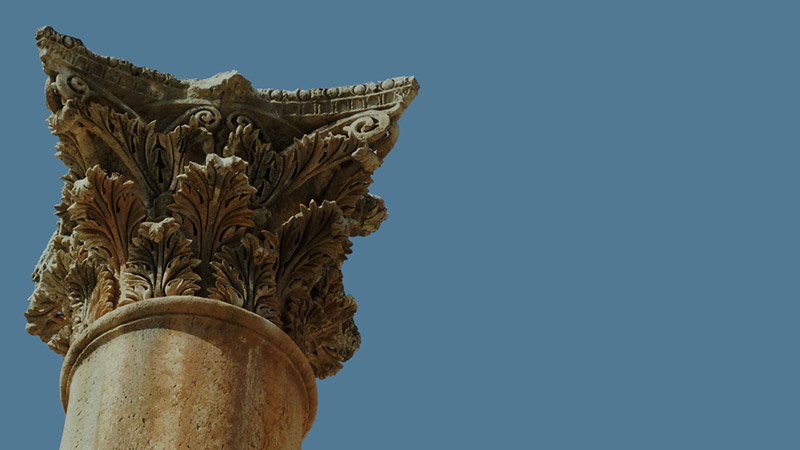More Results
Showing 12 of 243
Articles

My Rock and My Fortress
MasadaHerod the Great built and impressive fortress at Masada to showcase his own power, but it is remembered today as a symbol of the Jewish desire for freedom.' The mountain of Masada stands tall in Israel's Judea Wilderness. On top of this spe...
MORE
No Greater Love
Korazin - The CityStudying the ruins of Korazin and other Galilean towns, scholars have pieced together a picture of family life in the first century. Korazin stood in the northwestern corner of the Galilee region, about three miles from the sea. ...
MORE
Not on Bread Alone
Not on Bread AloneIsrael is mostly rugged desert. The variety of Hebrew words for desert or wilderness indicates the significant role the landscape played in biblical history and imagery. For the Hebrews, the desert was far more formative than the...
MOREEncyclopedia

Net Weight
Net WeightIn Jesus' day, fishing nets were made of fibers, sometimes linen.They had wood floats along one edge and sinkers attached to the rope at the bottom. These net sinkers were often made of small stones of basalt, flint, or limestone. A smal...
MORE
Nicolations
In Revelation 2:25, the apostle John condemns those who follow the teachings of Balaam and the Nicolaitians. Balaam is known for his role in encouraging the Israelites to participate in the feasts and sexual immorality of the Canaanite idols, whic...
MORE
Olive Oil Processing
The cultivation and harvesting of olives was essential to Galilee's first-century economy. A community olive processing installation included an olive crusher, which cracked the olives in order to produce an initial flow of oil, and an olive press...
MORE
Olive Tree Imagery
The olive tree is one of the plants most frequently mentioned in the Bible. Scripture writers used olive tree imagery to describe Jesus' Jewish roots and the relationship of Jews and Gentiles.When an olive tree gets very old (often hundreds of yea...
MORE
Olive Trees
The olive tree is known for its beauty (Hosea 14:6) partially because its large ancient trunk often has the look of a productive past. Furthermore, one side of the tree's leaves are light green and the other, a much lighter green, give the leaves ...
MORE
Orthodox Triangle Area
Certainly not all people who lived in this fertile area were religious or even Jewish. But it is clear that most inhabitants of the sea's northwestern side were very religious;a fact supported by the many synagogues discovered there.Jesus conducte...
MORE
Ossuaries
Ossuaries Beginning shortly before Jesus' time, Jewish people began to practice reburials. After the flesh had decayed from the bones of a person who was buried, the bones were collected and placed in a small box, an ossuary, like the one shown he...
MOREGlossary

Negev Definition
Word means "dry" or "parched." Desert on the southern edge of Israel, south of the Judea Mountains. The Israelites wandered here during their 40 years in the wilderness. Home of Jacob, father of the 12 tribes, and many desert n...
MORE
New City Definition
During and after Jesus' time, the city expanded north, and many wealthy people built large villas in this new area of Jerusalem. Herod Agrippa walled it about thirty or more years after Jesus? crucifixion.
MORE

















